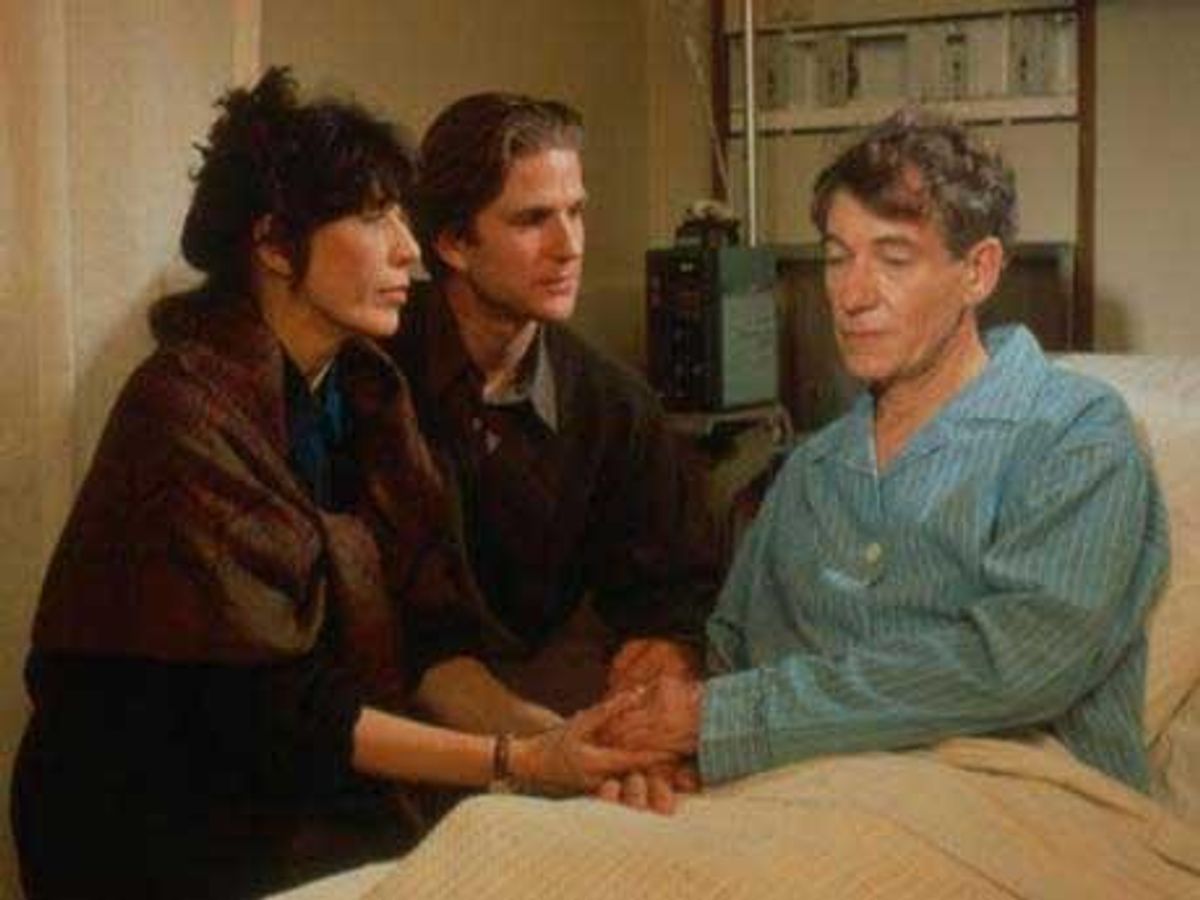I was sitting at my desk in 1987, killing time at a temp job while I decided what to do with my life, and in my hands was a non-fiction hardback that had just been published. The book chronicled the end of the world.
And the Band Played On detailed the beginning of the plague that — at the very moment I was reading the book — was killing my closest friends. It charted the race to find the reason for the calamity, and the cunning, seemingly unstoppable virus that was eventually identified as the culprit. It was the same virus that, two years before the book was released, was found replicating in my body.
The book weighed a lot. I remember how heavy it felt in my hands, over 650 pages of science and grief and infighting and death, the longest book I had ever read, and how fascinating it seemed to me that humanity would end this way, with people arguing over professional territory and gay sex and politics. It was fascinating, yes, and sad and terrible.
I devoured every page, because as frightening as it was to read exactly how AIDS was devastating the globe while knowing it would probably kill me, the book also felt like validation, that someone had finally called out a crisis that had existed under the radar of the mainstream for too long. And thank God, everyone was reading it. The book was a bestseller, was translated into seven languages, and it made a celebrity out of its author, San Francisco journalist Randy Shilts.

You probably think I'm a terrible drama queen, having such a fatalistic view of the world at the time. That's okay. Maybe you aren't a gay man who lived in a major city during the 1980s. You haven't had the experience of three friends simultaneously clinging to life in the intensive care ward, of trying to find the faces of loved ones under layers of skin lesions, of making your guest room available to a mere acquaintance with nowhere else to die.
And the Band Played On captured that sense of dread and hopelessness. Yes, it was often written as melodrama, but it was our melodrama, and it felt right at the time.
It wasn't until 1993 that an all-star film version was produced by HBO and by then, the gay community and our allies had created organizations to help the suffering while new activist groups demanded medications and progress. It wasn't tidy and it was far from the end of the body count, but we had nevertheless adjusted to a new normal. With Hollywood tackling AIDS that year with Philadelphia and Broadway doing the same with the revelatory Angels in America, the television version of And the Band Played On felt outdated as soon as it aired, or at least like an afterthought.
Only after reading the book and seeing the film did I learn how the truth had been manipulated.
 At right: The AIDS Memorial quilt panel for Gaétan Dugas.
At right: The AIDS Memorial quilt panel for Gaétan Dugas.
Amidst its storylines about the scientific race by the Centers for Disease Control and Prevention and the fear of sex of nearly every kind, And the Band Played On introduced us to Gaétan Dugas, also known by his slanderous nickname, Patient Zero. Dugas was a handsome Canadian flight attendant who reportedly spent a lot of time getting laid in practically every city with an airport. Supposedly, a lot of his sex partners were later among the first AIDS patients in the United States. Included in the book was the rumor Dugas would have sex with unwitting victims and then identify his skin lesions as the gay cancer.
Except, as we now know, the characterization was unfair if not completely untrue. Two years ago, Shilts' former editor admitted the book needed a literary device and had encouraged Shilts to create the epidemic's first "AIDS monster." The athletic sex life of Gaétan Dugas fit the bill nicely, and served as a symbol, deliberately or not, for everything people feared about gay sexuality.
Dugas had already died in 1984, never having the opportunity to respond to the book's claims. Epidemiologists now contend that, since HIV existed for many years prior to Dugas' alleged exploits, he hardly qualified for Patient Zero status.
That fact that author Shilts went along with the tabloid storytelling device is pretty disheartening. It diminishes the book and robs me of the pleasurable memory of reading it at a time when I really needed the truth.
Dugas, as presented in the HBO film, is a sexually charged scoundrel, smoking cigarettes with the panache of a movie villain, with a French accent and a shirt unbuttoned down to there. After some warnings from health officials about the dangers of his sexual prowess, the Dugas character blames them for not stopping the plague he appears to be spreading, and then he slinks off into the shadows for the rest of the movie. (The next time you see the latest media hysteria depicting an HIV-positive person roaming the countryside intentionally infecting the populace, it'd be wise to remember the unjust myth of Gaetan Dugas, and how much the media loves to tell stories in strict black and white.)
The film also gives only passing reference to the advocacy efforts of the gay community as a whole. Instead, we are reduced to a belligerent crowd at a town hall meeting, decked out in tanks tops and leather harnesses, yelling to keep the bathhouses open. The nuance of our internal debate over sexual identity and actual transmission risks are lost in the exploitation of gay stereotypes.
A fascinating video exists from 1983, during the infancy of the epidemic, of an actual public forum hosted by Canada's AIDS Vancouver. It presents a far more thoughtful view of the gay community. In the video, physicians and advocates explain the facts as they were known at the time to a packed room of nervous attendees. One of the concerned gay men to step to the microphone is a good looking blond who displays the earliest ravages of the mysterious new disease.
"If you present yourself to a doctor," he asks, "what kind of test can be undertaken to confirm if you are a carrier or not?" There was no such test, or even a virus identified at the time, but he pushed on. "So if you have a lover who has AIDS and you don't have AIDS, what is the warning you give to people? You should not necessarily fear those people." His questions were simple, uncomfortable, and produced only wary responses from the panel.
That man, the fading beauty looking for answers to such troubling questions, was Gaétan Dugas.
About the Author
Mark S. King writes about life as a gay HIV positive addict in recovery for his blog, My Fabulous Disease.
Read more about Gaétan Dugas in Positive Living.


 At right: The AIDS Memorial quilt panel for Gaétan Dugas.
At right: The AIDS Memorial quilt panel for Gaétan Dugas.









































































